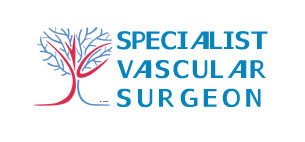| |
| |
| |
Catheter-directed thrombolysis is a minimally invasive treatment that dissolves abnormal blood clots in blood vessels to help improve blood flow and prevent damage to tissues and organs. |
| |
| |
When blood does not flow smoothly through a vessel, it can begin to coagulate, turning from a free-flowing liquid to a semi-solid gel, or blood clots. A blood clot, or thrombus, that forms within a blood vessel may continue to grow, blocking off the blood supply to certain parts of the body and causing damage to tissues and organs. In some patients, blood clots come from one site, dislodge, travel downstream, and lodge in relatively small vessels causing a blockage, or embolization. Untreated, a vascular blockage due to thrombosis or embolization, can result in the loss of an organ or extremity, with potentially life-threatening consequences. |
| |
| |
In a catheter-directed thrombolysis procedure, x-ray imaging is used to help guide a special medication or medical device to the site of blood clots to dissolve the blockage.
|
| |

| How should I prepare? |
| |
| |
Prior to your procedure, your blood may be tested to determine how well your kidneys are functioning and whether your blood clots normally. |
| |
| |
You should report to your doctor all medications that you are taking, including herbal supplements, and if you have any allergies, especially to local anesthetic medications, general anesthesia or to contrast materials containing iodine (sometimes referred to as "dye" or "x-ray dye"). Your physician may advise you to stop taking aspirin, nonsteroidal anti-inflammatory drugs (NSAIDs) or blood thinners for a specified period of time before your procedure. |
| |
| |
Also inform your doctor about recent illnesses or other medical conditions. |
| |
| |
Women should always inform their physician and x-ray technologist if there is any possibility that they are pregnant. Many imaging tests are not performed during pregnancy so as not to expose the fetus to radiation. If an x-ray is necessary, precautions will be taken to minimize radiation exposure to the baby. You will receive specific instructions on how to prepare, including any changes that need to be made to your regular medication schedule.
|
| |

| Thrombolysis technique |
| |
| |
If you have DVT, your body will dissolve a blood clot over time, but damage can occur inside your vein in the meantime. For this reason, your doctor may recommend a clot-busting drug called a thrombolytic agent. |
| |
| |
This DVT treatment may be necessary: |
| |
| |
- For larger clots
- If you're at high risk for pulmonary embolism
- If you have DVT in an arm, instead of a leg
|
| |
| |
Catheter-directed thrombolysis rapidly breaks up a clot, restoring blood flow. It may also preserve valve function in the vein that contained the clot. The procedure is done in the hospital and carries a higher risk of bleeding problems and stroke than does anticoagulant therapy. |
| |
| |
With imaging guidance, an interventional radiologist inserts a thin tube (catheter) into and through a vein in your leg. The radiologist then puts the tip of the catheter into the clot and infuses a clot-busting drug directly into it. If the vein appears narrowed, the radiologist may do a balloon angioplasty or stent placement to widen it and help prevent future blockages.
|
| |

| After the procedure |
| |
| |
- Devices to monitor your heart rate and blood pressure will be attached to your body.
- You will feel a slight pin prick when the needle is inserted into your vein for the intravenous line (IV) and when the local anesthetic is injected.
- If the case is done with sedation, the intravenous (IV) sedative will make you feel relaxed and sleepy. You may or may not remain awake, depending on how deeply you are sedated.
- You may feel slight pressure when the catheter is inserted, but no serious discomfort.
- As the contrast material passes through your body, you may get a warm feeling.
- Many patients experience some side effects after thrombolysis. Pain is the most common and can readily be controlled by pain medication taken by mouth or given through your IV.
|
| |

| Benefits |
| |
| |
- Catheter-directed thrombolysis can greatly improve blood flow and reduce or eliminate the related symptoms and effects without the need for more invasive surgery.
- Thrombolysis is a safe, highly effective way of re-establishing circulation blocked by a clot.
- Thrombolysis is less invasive than conventional open surgery to remove clots and the hospital stay is relatively brief. Blood loss is less than with traditional surgical treatment and there is no obvious surgical incision.
- No surgical incision is needed—only a small nick in the skin that does not have to be stitched closed.
|
| |

| Risks |
| |
| |
- Any procedure where the skin is penetrated carries a risk of infection. The chance of infection requiring antibiotic treatment appears to be less than one in 1,000.
- There is a very slight risk of an allergic reaction if contrast material is injected.
- Any procedure that involves placement of a catheter inside a blood vessel carries certain risks. These risks include damage to the blood vessel, bruising or bleeding at the puncture site, and infection.
- There is a risk of infection after thrombolysis.
- Whenever anticoagulant or thrombolytic agents are used, there is a risk that bleeding will occur elsewhere in the body. The most serious complication is intracranial bleeding, or bleeding in the brain.
- In some cases the material that is blocking your vessel may move to another part of the vascular system. Usually this can be treated with further thrombolysis but sometimes may require surgery.
- There is a risk of kidney damage especially in patients with pre-existing kidney disease.
|
| |

| Limitations of Catheter-directed Thrombolysis |
| |
| |
Technically successful thrombolysis requires that the catheter be placed in a stable position near the clot. This means that the catheter tip is situated so that the clot-dissolving agent can reach the site of the obstruction. In some cases, the procedure is not technically possible. It is important to understand that clot removal alone cannot repair tissue already damaged by lack of circulation. Further treatment may be required, both for the underlying condition that caused the clot and for any damage to affected organs or other tissues.
|
|

|

